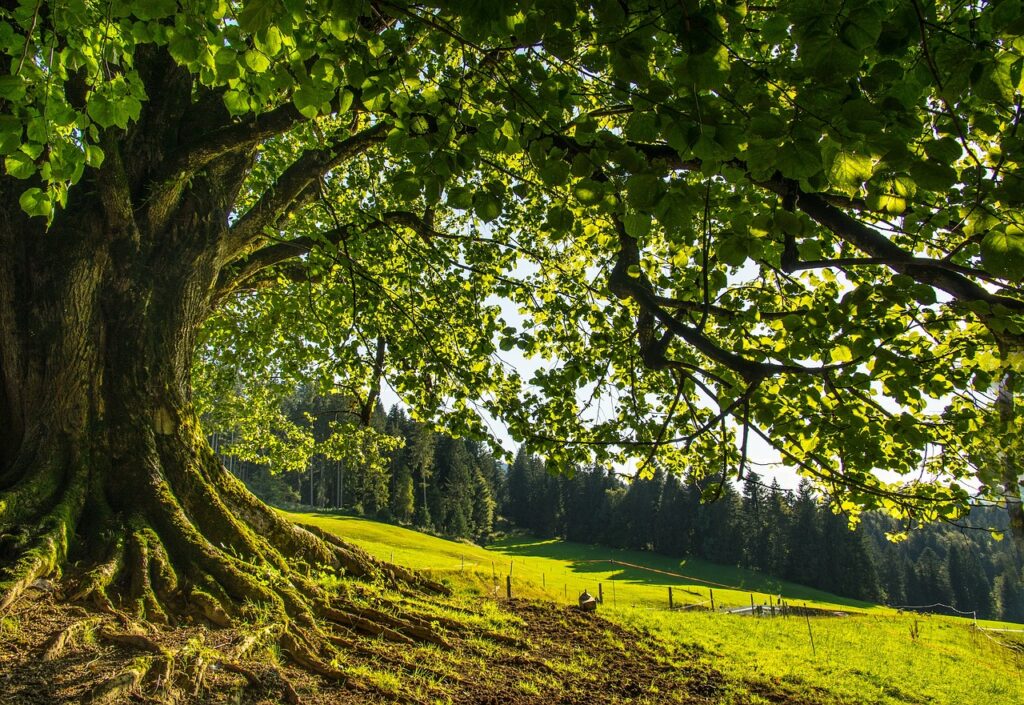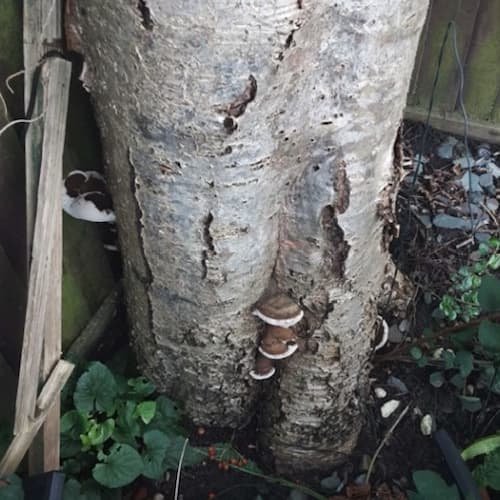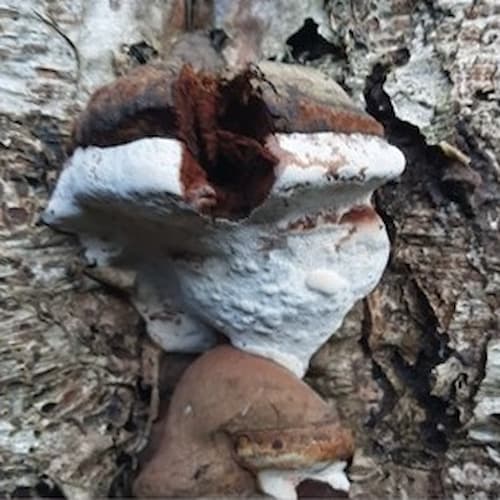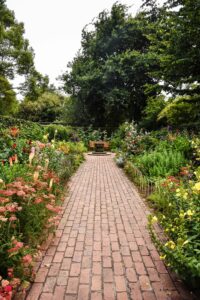Benefits of Trees in Mitigating Summer Heat
Shade Provision:
Trees provide shade, reducing temperatures on the ground and buildings beneath them. This helps lower the ambient temperature in urban areas, a phenomenon known as the urban heat island effect.
We all have sat under trees to take shelter from the heat of the sun during the day, either on roadside café within park or out walking with the dog.
It’s notable in the landscape bees nests or rabbit warren maybe under trees and during the day larger animals such as cattle, sheep or even the pet dog settle under the tree.

Transpiration:
Trees release water vapor through their leaves in a process called transpiration. This release of moisture cools the air, similar to how sweating helps cool the human body.
That’s why it feels cooler, and, in many cities, boulevards have trees carefully planted to provide shade.
Carbon Sequestration:
Trees absorb carbon dioxide (CO2) from the atmosphere, which helps mitigate the greenhouse effect and global warming. By reducing atmospheric CO2, they indirectly help lower temperatures.
Different species of trees vary in this process. Simply when planting trees in an urban landscape the absorption of CO2 in the soil and within the tree physiology is essential.

Air Quality Improvement:
Trees filter pollutants and particulates from the air, which can improve overall air quality and reduce heat-absorbing particles in the atmosphere. Again, this is species-specific, conifers are excellent at particulate absorption from the atmosphere into the dense canopy.
Impacts of Summer Heat on Trees
Water Stress:
High temperatures increase the rate of evaporation and transpiration, which can lead to water stress in trees if there is insufficient water supply. Prolonged water stress can weaken trees, making them more susceptible to diseases and pests.
The blazing summer of 2022 with the highest temperatures recorded in the UK is now showing its hand with many trees presenting with unexplained deaths in 2024 or the appearance of fungal colonisation such as dryads saddle, acute oak decline or prompt colonisation of Ganoderma spp.
If a tree has been badly managed with poor pruning or compaction or damage to the tree roots, then that stress combined with water stress leads to tree decline.


Heat Stress:
Extreme heat can cause physiological stress in trees, affecting their growth, photosynthesis, and overall health. Symptoms of heat stress include wilting, leaf scorch, and premature leaf drop. Again, this was seen in 2022 with oak tree shedding their leaves in August. This then reduces the trees effectiveness in photosynthesis and storage of food resources which then causes stress and decline.
Soil Degradation:
High temperatures can dry out the soil, reducing its ability to retain moisture and nutrients. This can adversely affect root development and the overall health of trees.
We all have seen baked soil or even compacted soil with rainfall being washed of the tree’s base.
The tree base should reflect the nature of a woodland floor, with nutrient exchange within the soil profile.

Increased Pest and Disease Activity:
Warmer temperatures can lead to an increase in pest populations and disease activity. Trees already stressed by heat and drought are more vulnerable to these threats.
Altered Phenology:
Heat can affect the timing of seasonal activities in trees, such as leafing, flowering, and fruiting. This can disrupt ecosystems that depend on these natural cycles. Trees carry many species of insects and fauna that are co-dependent on the tree’s seasonal life cycle of berries, nuts, flowering, and leaf drop. A change in patterns means stress for the associated ecosystem.
Adaptation Strategies
Proper Watering:
Ensuring that trees receive adequate water, especially during hot and dry periods, can help mitigate the effects of heat stress. Deep watering encourages strong root systems. The use of irrigation rings, and water bags or the installation of an irrigation system.
Manual watering is labour intensive and costly. In many tree-planting schemes, this is often overlooked.

Mulching:
Applying mulch around the base of trees helps retain soil moisture, regulate soil temperature, and reduce water evaporation.
The reapplication every 36 months to ensure a depth of 3-5cm with a width of 1.5m away from the base of the tree but not in contact with the tree base.

Selecting Heat-Resistant Species:
Planting tree species that are well-adapted to high temperatures and drought conditions can help create more resilient urban forests. Kew Gardens has announced the plan to plant trees in the landscape from the Mediterranean climate area. TDAG tree selection guides provide tree species details going forward.
Urban Planning:
Incorporating green spaces and tree canopies in urban planning can reduce the urban heat island effect and create cooler environments. Again, TDAG trees for planning and development provide great guidance on how to plan for the urban landscape.
By understanding and addressing the impacts of summer heat on trees, we can better protect these vital components of our ecosystems and enhance their ability to provide cooling and other benefit










